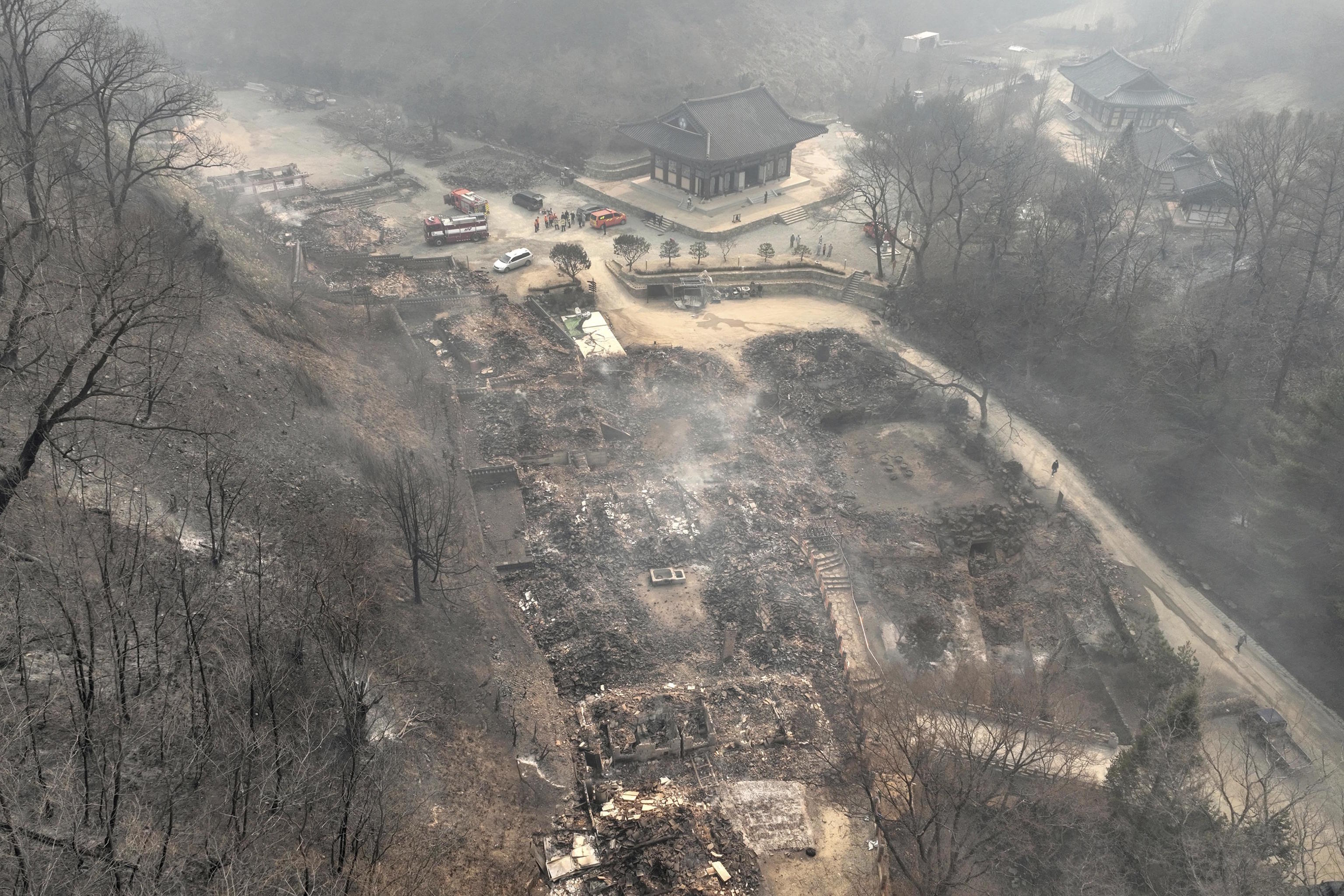South Korea is experiencing the worst forest fires in its history, and authorities and firefighters continue to try to contain the fires that have been raging in the southeast of the country for almost a week, leaving at least 26 dead and destroying several structures considered national treasures, some over 1,000 years old, reports Efe.
Among the victims is a pilot who died on Wednesday after the helicopter he was piloting crashed while extinguishing the fires in Uiseong county, Gyeongbuk province, although the facts are still under investigation. Of the total deaths, 22 were reported in North Gyeongsang province.
These fires have also displaced 37,185 residents, including 29,911 in Uiseong and Andong counties, about 190 kilometers southeast of Seoul, according to the government agency. Of these, 20,485 have been able to return home, while the remaining 16,700 are still housed in temporary shelters.
The fires are occurring in 10 medium and large-sized spots and have burned about 36,009 hectares of forests.
The country's Central Disaster and Safety Countermeasures Headquarters stated that the forest fires in North and South Gyeongsang provinces had caused, in addition to the deaths, eight serious injuries and 22 minor injuries.
The flames ravaging southern Korea have destroyed part of an ancient complex of Buddhist temples, burning two buildings designated as national treasures.
The Gounsa temple was originally built in 681 AD during the Shilla dynasty that ruled over half of the Korean peninsula and is located at the foot of Mount Deungun in the city of Uiseong. Although it does not house buildings built during that ancient period, it is home to several famous cultural heritages built later.
The temple was engulfed in flames on Tuesday as strong winds fueled the forest fires. Approximately 20 of its 30 buildings and structures were completely destroyed, including the revered Gaunru, a pavilion-shaped structure built in 1668 overlooking a stream, and Yeonsujeon, built in 1904 to commemorate a king's longevity, according to the Korean Heritage Service, administered by the State.
Both were built during the Joseon dynasty, the last on the Korean peninsula, and were given governmental designation as "heritage," a status granted to ancient buildings, paintings, and other cultural assets with historical and artistic significance, receiving state-level protection and maintenance.
"I went there this morning and found them reduced to ashes. I feel truly empty. Life is transient," commented Doryun, a monk who had lived in the temple for over three years when he was younger.
Doryun now works for a Buddhist organization in charge of the temple. He noted that the monks and Buddhist followers managed to move the temple's third "treasure," a stone Buddha statue allegedly built in the 8th century, to a safe place.
"Many buildings were destroyed, but we moved and protected other sacred assets so that we can preserve the temple," Doryun commented.
Doryun also mentioned that around 20 monks and other workers live in the temple, but none have been injured.
The Korean Heritage Service stated that the temple's other two lower-level cultural assets, including a stone pagoda, have also been found intact.
